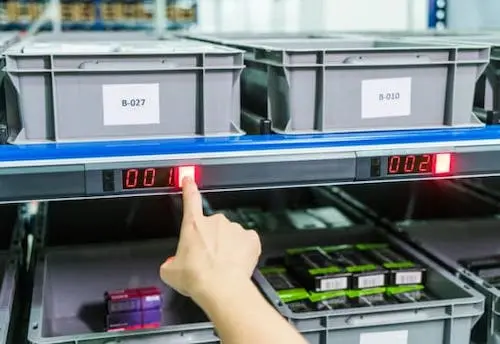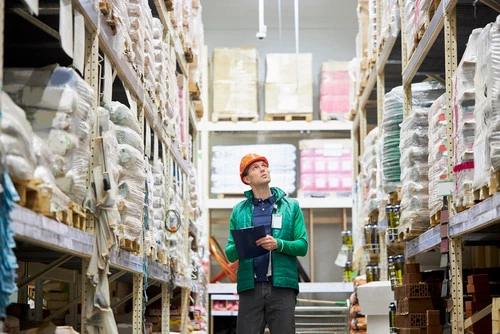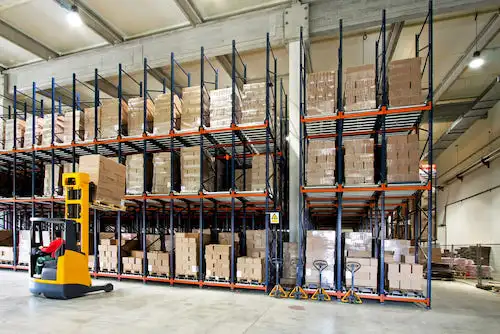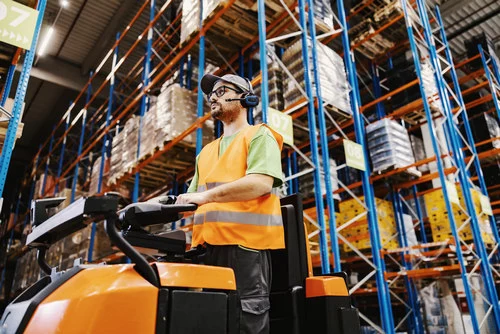Today, thanks to the advent of e-commerce and other online retail practices, order fulfillment has skyrocketed. It is a rapidly evolving, costly growing practice with a lot of moving parts — one that is under constant pressure to be faster, more efficient, and better. By leveraging technology, warehouses and distribution centers are upping their game and getting leaner and meaner when it comes to diligent, dynamic order fulfillment. In this article, we’re going to talk about one of those innovative tools that businesses are leveraging in order to be more competitive — pick-to-light systems.
What is a pick-to-light system?
A pick-to-light system is a type of technology that automates the process of picking and placing items throughout your warehouse or distribution center.
Pick-to-light systems have been around for decades and are used in warehouses, factories, distribution centers, and other industrial settings. The first pick-to-light system was introduced in the early 1990s by the company I-T-E. It consisted of a scanner that could identify the color and thickness of a plastic film and then automatically set up an injection molding machine to produce it. In the 1990s, many companies were looking for ways to automate their manufacturing processes. The goal was to reduce costs and improve efficiency. One way that manufacturers were able to do this was by automating their pick and place process. Over the years, these types of systems have evolved — getting better and better. They started to cross borders, no longer just used for production or manufacturing but for other key steps of a product’s life-cycle, particularly its shipping.
There are two types of pick-to-light systems: manual and automated.
- A manual system requires an operator to select items from a list on a computer screen or from a shelf.
- An automated system uses sensors to identify the correct item before it is picked up by the robotic arm.

Pick-to-light systems in warehouses can be used in many industries as they provide a better visual indication of the objects on the conveyor. The system improves a warehouse’s efficiency as well as its overall operating costs. It makes the whole methodology much more accurate as well as affordable.
Pick-to-light warehouse systems are innovative tech that provides workers or drones indicators on what objects to pick. This is done by using a light that shines on an object and a sensor that detects when an object is picked.
Pick-to-light systems are also used in manufacturing industries to improve the efficiency of production lines. The system detects when an object is picked up and sends a signal to the machinery to stop production until the item has been placed in its proper location. This saves time that would have been wasted waiting for workers to place each item in their designated spot before continuing work on it.
How does the pick-to-light system work?
The pick-to-light system lights up an item or shelve in your warehouse. It then uses a scanner – in the case of workers, a handheld one – that is used to quickly identify the correct product from a group of products. Product identification is done by scanning the barcode of the desired product.
The pick-to-light system has been in use for more than 30 years and it has become one of the most popular in the world of retail as well as shipping in the world.
Advantages and Disadvantages of pick-to-light system
Pick-to-light systems are used in warehouses to help employees find products. They work by using LED lights that are installed at the top of the shelves. These lights are programmed to turn on when an employee scans a barcode with a handheld scanner, or if they push a button on the shelf.
They direct an employee or a drone to the area and signal a package, product, or item that needs to be picked.
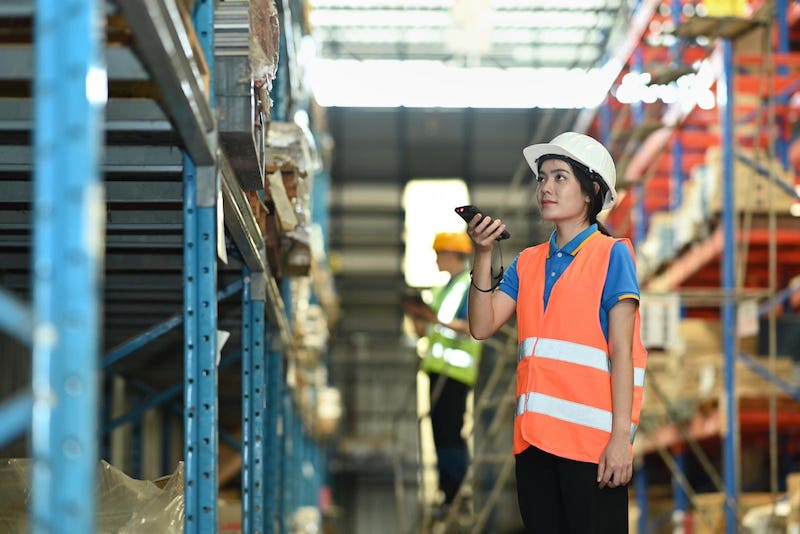
Advantages
- In warehouses with pick-to-light systems, employees can quickly find products and get back to work.
- The lighting is more efficient than other types of lighting because it only turns on when needed.
- Faster speed — by pinpointing, through its lighted system, the exact location or location of an order drones or workers can finish picking tasks faster.
- Higher accuracy — getting operators where they need to be each time simplifies the picking process. These types of systems are incredibly accurate once linked up to software and managing apps.
- Team-based — each worker has an area called a zone. Orders are passed from zone to zone. Light-directed systems take this into account and create an assembly line approach that enhances productivity by minimizing walking.
- Cost-effective — due to advances in tech as well as Windows-based computer systems the systems have become incredibly affordable.
- Hands-free — no more pick sheets or records. Operators can scan numbers on a carton and tote and the system does the heavy lifting. Reducing costs, and errors, and streamlining operations.
Disadvantages
The biggest disadvantage is one that is slowly being edited out by today’s tech and AI software. The system is not as accurate as it could be because it relies on human input. It might be difficult for an employee to see if they have scanned the right product or not. The system, in many cases, is linked to workers and their human foibles. Nevertheless, with the advent of drones, robots, AI, and automated hardware, some companies are bypassing these issues. They leverage tech and innovations to better their supply chain and max a pick-to-light system’s abilities.
Why invest in a pick-to-light solution?
Pick-to-light solutions are a great way to improve the efficiency of any warehouse. It is a very cost-effective solution that can be installed in just a few hours and will provide an instant return on investment.
A pick-to-light solution helps to identify the items that need to be picked for order fulfillment by illuminating them with light. These illuminated items are then picked by an operator, who is guided by the light, and placed on a conveyor belt for packing. They are fast, accurate, and cost-effective and in many cases, for a small investment, they can do wonders for a warehouse’s competitive drive.
Reach out to SRSI to improve your warehouse with a pick-to-light system at [email protected].
 Skip to main content
Skip to main content
